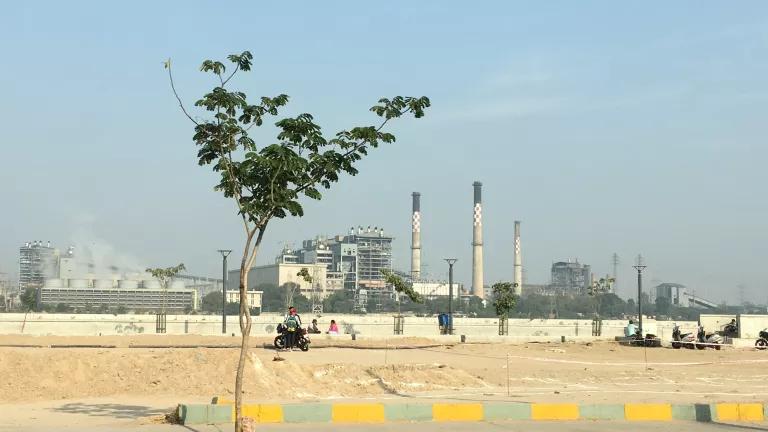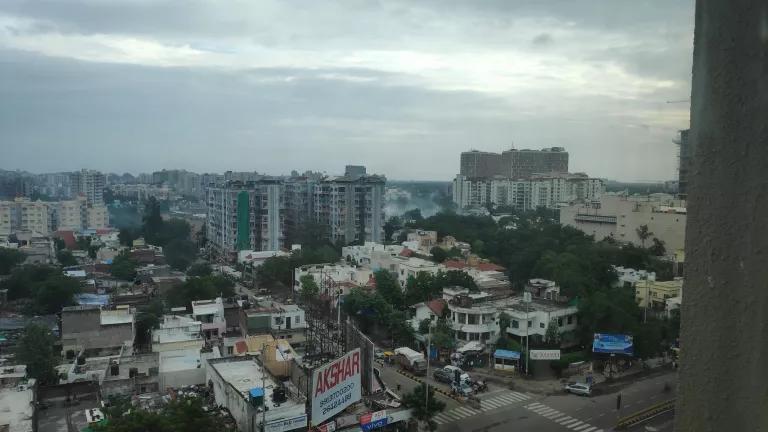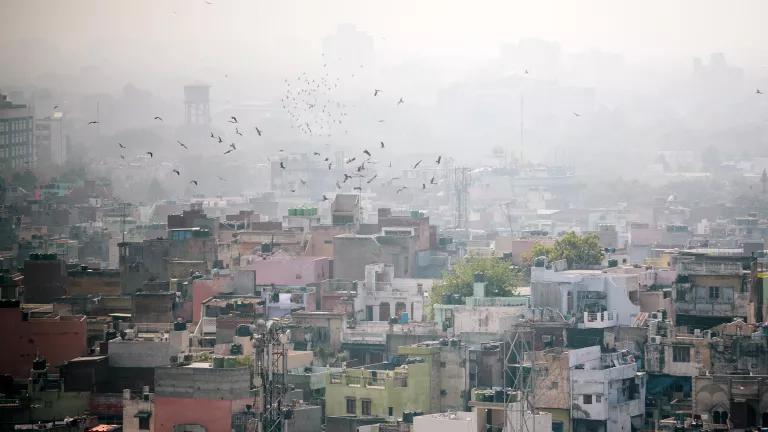Climate Action Delivers Air Quality & Health Gains in India
City-led climate efforts can deliver air quality and health benefits.

The coal-fired Torrent Power Plant opened in Ahmedabad, India in 1934.
As air pollution levels once again spike across India this winter, the health harms of this problem are coming into even sharper focus. Indian researchers estimate that outdoor fine particulate matter air pollution (largely a byproduct of burning fossil fuels) is linked to about 980,000 early deaths each year. Unfortunately, this problem appears to be getting worse, not better. The science indicates that premature mortality from air pollution in the twelve current Indian “megacities” (population over 10 million, including the cities of Mumbai, Pune, Kolkata, and Ahmedabad) increased significantly between 2005 and 2018. That change stems in part from sulfur dioxide emissions, a big contributor to the formation of health-harming fine particles (known as PM2.5) in the atmosphere. Sulfur dioxide emissions from industry and coal-fired power plants increased by 50 percent between 2007 and 2016.
Now, a new applied research study published by a team of Indian and international experts indicates that local actions to address the long-term threat of climate change can also deliver major air quality and public health benefits within the next decade.
New Study Highlights Health Benefits of Local Climate Action
While broad-scale evidence on the global health harms of extreme heat, air pollution, and other climate-linked threats has been steadily accumulating, there is less evidence about the local burden of these hazards and the health benefits of reducing them. To address this gap, NRDC has been working for the past three years with Indian experts in climate, air quality, energy, and public health on an applied research project examining the city-level health benefits of climate action. The findings of that work are now available in a peer-reviewed scientific manuscript in the journal Environmental Research: Health and a summary factsheet available in both English and Hindi:

NRDC Factsheet: Climate Action Improves Health from Cleaner Air in Ahmedabad, India (English version)

NRDC Factsheet: जलवायु समाधान से अहमदाबाद, भारत मेें स्वच्छ हवा से जनस्वास्थय को बेहतर बनती है (Hindi version)
Achieving Air Quality Improvement in Ahmedabad
Our research focuses on the effects of air quality on public health in Ahmedabad, a city of 8.5 million people in the western Indian state of Gujarat. The city has been the focus of innovative efforts to improve climate resilience, including South Asia’s first Heat Action Plan, launched in 2013. More recently, because air quality in Ahmedabad exceeds national health-based standards, it became one of 132 non-attainment cities nationwide taking actions to improve air quality through the National Clean Air Programme.
Air quality frequently reaches unsafe levels in Ahmedabad, and the problem could worsen in the future because of skyrocketing demand for electricity to power growing need for air conditioning (A/C), which is currently estimated to only reach about 6% of Indian households. While A/C saves lives and the India Cooling Action Plan projects eightfold growth in A/C demand over the next 20 years, it can inadvertently worsen air pollution problems if fossil fuels are being burned to meet those growing energy needs.
But local efforts can address the root causes and impacts of climate change, via mitigation and adaptation action. Mitigation reduces heat-trapping emissions at their source and limits climate change; adaptation limits the harms from climate impacts already underway. Those actions can deliver meaningful reductions in energy use, energy-related air pollution emissions, and air quality-related health problems. The state of Gujarat is a national leader in installing renewable energy capacity, in alignment with India’s goal to expand renewable sources to meet half of its energy needs by 2030. Moreover, low-cost cool roof installations have been shown to reduce temperatures inside buildings, lowering household energy bills and reducing strain on the power grid.
Our applied, multi-sector project sought to estimate the air quality and health co-benefits of climate change mitigation and adaptation in Ahmedabad by the year 2030. Collaborators from NRDC, the Indian Institute of Public Health-Gandhinagar, Gujarat Energy Research and Management Institute, and the Indian Institute of Tropical Meteorology applied local data to estimate, for the first time, how climate actions can improve air quality and health in the near-term.

Flowchart depicting modeling sequence for climate change, energy, air quality, and health analysis in Ahmedabad, India.
Cleaner Air, Improved Health
The findings we’ve arrived at through this integrated modeling effort are striking. First, we estimate that between 2018 and 2030, the city’s population is poised to expand by about 850,000. Meanwhile, climate warming is expected to increase the average annual temperature in Ahmedabad by about 0.8 °C. That extra heat is expected to contribute to a nearly threefold growth in cooling demand in buildings.
Overall, if the city continues to heavily rely on an old coal-fired power plant and other fossil fuel sources to meet its energy needs, air quality in Ahmedabad could deteriorate markedly by 2030, as PM2.5 concentrations increase about 4 µg/m3. But if the city executes strong clean energy and cool roofs actions, it can avoid that increase in PM2.5 air pollution and actually register lower levels of air pollution in 2030 than in 2018, even as the population grows and economy expands. Comparing a business-as-usual, fossil-fuel heavy future with a climate-smart vision of 2030, we estimate that air quality improvements with mitigation and adaptation would result in up to 1,400 fewer annual deaths in Ahmedabad.
Our study shows that shifting India away from fossil fuels, moving even further and faster and towards clean energy, and stronger heat adaptation through cool roofs can help reduce deadly air pollution, keep people cooler and healthier, and reduce the carbon dioxide pollution that fuels climate change. By incorporating climate, energy, cooling, land cover, air pollution, and local health data, the comprehensive modeling method we deployed is scalable to estimate local air quality and health co-benefits in diverse situations. Our findings show that city-level climate change response measures can produce significant co-benefits for air quality and health in the near-term.
Scaling Up Climate Solutions That Protect Health
Overall, this work provides a blueprint for future studies to estimate local air quality and health co-benefits of climate change responses in India. Such research can help the public understand how climate action in India can deliver cleaner air. It can also strengthen understanding of health implications of policies in India that affect energy use and air quality, such as the India Cooling Action Plan, India's climate change goals under the United Nations Framework Convention on Climate Change, and further implementation of the National Clean Air Programme. These findings on avoidable premature deaths from air quality improvements strengthen the health argument for scaling up local climate solutions across the country.
This work was supported by the Wellcome Trust [Grant #216093/Z/19/Z].




